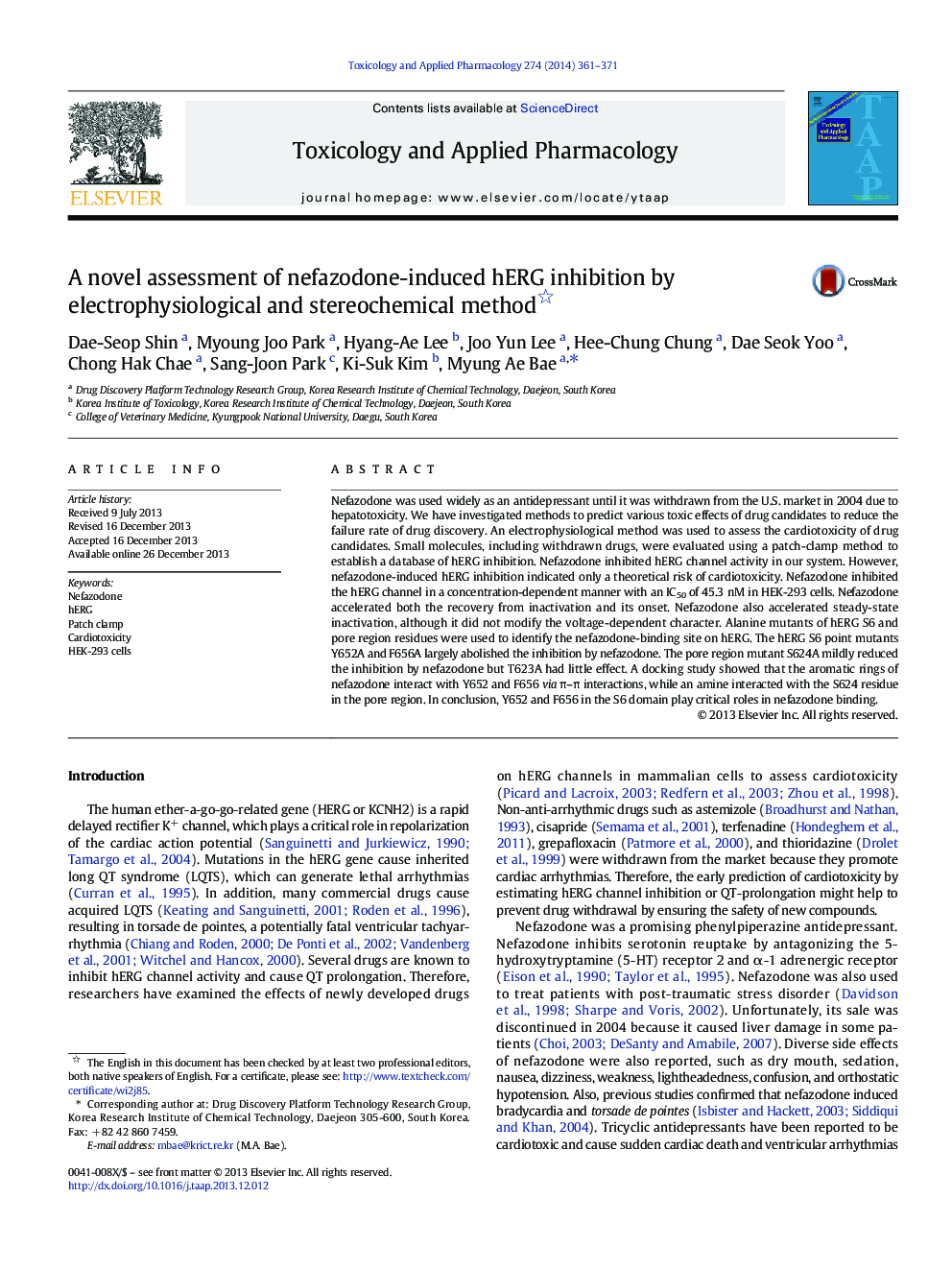| Article ID | Journal | Published Year | Pages | File Type |
|---|---|---|---|---|
| 5846252 | Toxicology and Applied Pharmacology | 2014 | 11 Pages |
Abstract
Nefazodone was used widely as an antidepressant until it was withdrawn from the U.S. market in 2004 due to hepatotoxicity. We have investigated methods to predict various toxic effects of drug candidates to reduce the failure rate of drug discovery. An electrophysiological method was used to assess the cardiotoxicity of drug candidates. Small molecules, including withdrawn drugs, were evaluated using a patch-clamp method to establish a database of hERG inhibition. Nefazodone inhibited hERG channel activity in our system. However, nefazodone-induced hERG inhibition indicated only a theoretical risk of cardiotoxicity. Nefazodone inhibited the hERG channel in a concentration-dependent manner with an IC50 of 45.3Â nM in HEK-293 cells. Nefazodone accelerated both the recovery from inactivation and its onset. Nefazodone also accelerated steady-state inactivation, although it did not modify the voltage-dependent character. Alanine mutants of hERG S6 and pore region residues were used to identify the nefazodone-binding site on hERG. The hERG S6 point mutants Y652A and F656A largely abolished the inhibition by nefazodone. The pore region mutant S624A mildly reduced the inhibition by nefazodone but T623A had little effect. A docking study showed that the aromatic rings of nefazodone interact with Y652 and F656 via Ï-Ï interactions, while an amine interacted with the S624 residue in the pore region. In conclusion, Y652 and F656 in the S6 domain play critical roles in nefazodone binding.
Related Topics
Life Sciences
Environmental Science
Health, Toxicology and Mutagenesis
Authors
Dae-Seop Shin, Myoung Joo Park, Hyang-Ae Lee, Joo Yun Lee, Hee-Chung Chung, Dae Seok Yoo, Chong Hak Chae, Sang-Joon Park, Ki-Suk Kim, Myung Ae Bae,
